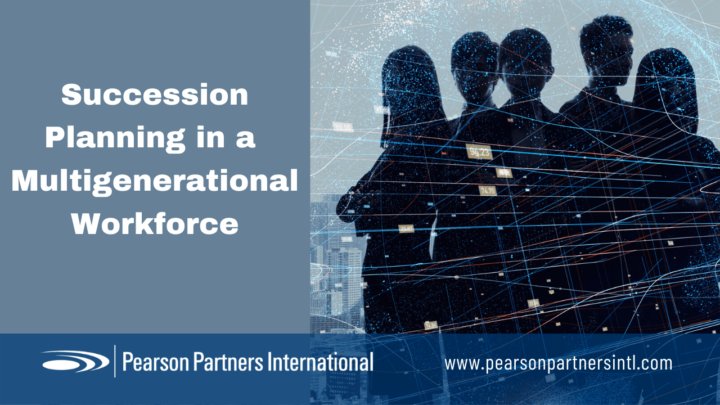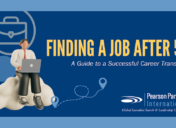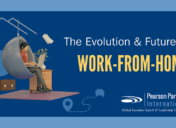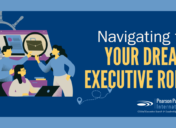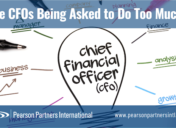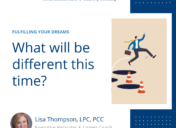Succession Planning in a Multigenerational Workforce
Lisa Thompson, LPC, PCC – VP & Professional Career Coach, Pearson Partners International
For the first time in the modern U.S. workforce, five generations are working alongside each other and competing for opportunities. Each of these generations, having come of age in different cultural and economic environments, has developed distinct fundamental values and predominant work styles. These differences raise a wide range of challenges and complexities for organizations, including attracting, developing and retaining people with different motivators and at various stages of their careers. However, there is one overarching challenge: finding and hiring younger executives with the potential to become tomorrow’s CEOs, CFOs and other C-suite executives to lead organizations into the future while continuing to leverage the experience, knowledge and wisdom of older executives.
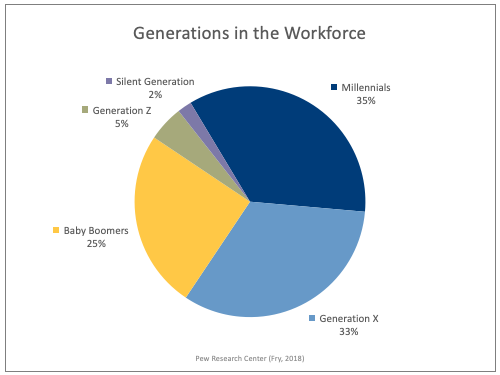 According to Pew Research Center (Fry, 2018), Millennials (also known as Generation Y and born between 1981 and 1996) represent the largest component of the U.S. labor force, at 35 percent of workers. Generation X (born between 1965 and 1980) follows closely, representing 33 percent of the workforce. The Baby Boom generation (born between 1946 and 1964) represents 25 percent of the workforce, a number that is shrinking as the youngest in this group reaches age 56 and the oldest reaches age 74. Generation Z (born after 1997), now entering the workforce and representing 5 percent, is an increasing component of the labor force as these young adults complete school and look for jobs. We still have the Silent Generation (born between 1928 and 1945) in the workforce, representing 2 percent.
According to Pew Research Center (Fry, 2018), Millennials (also known as Generation Y and born between 1981 and 1996) represent the largest component of the U.S. labor force, at 35 percent of workers. Generation X (born between 1965 and 1980) follows closely, representing 33 percent of the workforce. The Baby Boom generation (born between 1946 and 1964) represents 25 percent of the workforce, a number that is shrinking as the youngest in this group reaches age 56 and the oldest reaches age 74. Generation Z (born after 1997), now entering the workforce and representing 5 percent, is an increasing component of the labor force as these young adults complete school and look for jobs. We still have the Silent Generation (born between 1928 and 1945) in the workforce, representing 2 percent.
The U.S. workforce largely comprises Millennials and Generation X, between 24 and 55 years of age. Baby Boomers, who dominated the workforce for decades, are now over 55 and many are retired or planning to retire in the next ten years. The reins of corporate leadership are being handed over to Generation Xers in their 40s and 50s. As they move up into the senior executive ranks, the next emerging group of workers includes Millennials and Generation Z, who are in their 20s and 30s and are the future talent being developed and mentored to take the lead. The Silent Generation is still represented in small numbers, with improvements in healthcare extending the duration that people can continue their careers.
With five generations in the workforce, companies are faced with diverse groups of workers to engage and manage. Each generation brings different perspectives, viewpoints, motivators, communication preferences and work styles. These differences can result in misunderstandings and missed opportunities, especially in the workplace. Organizations should use distinct approaches to attract, retain and develop the right talent from each generation to fill their critical roles while appealing to many diverse types of candidates. Here, we focus on the work styles and motivators of the three youngest talent groups, comprising almost three-quarters of the workforce.
Generation X
For all the media focus on the differences in the work styles of Boomers and Millennials, Gen X has received far less attention. Sandwiched in the middle of two very different generations, Gen X has some of the qualities and styles of each, with some common factors to consider in recruiting, developing and retaining these new leaders.
Gen Xers, in their 40s and 50s, value freedom and self-sufficiency to a greater extent than either the Boomers or Millennials. Like the Boomers, they are hard workers while still valuing family and personal time, and like the Millennials, they appreciate an enjoyable workplace along with flexible work hours and locations. Having grown up during a time of corporate downsizing and economic and political instability, they can be less attached to their employers—particularly companies that fail to engage them on a personal level. The value they place on community engagement makes it imperative for recruiters to showcase a company’s highest values and point out opportunities for executives to become involved in community, charitable and other causes that can make a positive difference in the world. Once onboard, Gen Xers need to continue to feel personally engaged and enriched to feel satisfied in their career.
Millennials
Millennials, in their 20s and 30s, represent the next generation of leaders. Their work styles, attitudes and work ethics have often been maligned and cited in sharp contrast with those of Baby Boomers. They have even been characterized as difficult to manage, which in fact usually results from a lack of understanding of their unique styles and motivators.
Millennials grew up with abundant social and educational opportunities. They have been encouraged to voice their opinions and have a strong desire to have input and be part of the solution. They want to know that their work has meaning. Millennials are on track to be the most racially and ethnically diverse component of the workforce, according to Pew Research Center (Ibid). They are attracted to companies that show they value diversity in culture and thought, and those that embrace technology, inclusivity and teamwork.
Generation Z
Gen Z workers are in their early 20s and poised to add over 60 million people to the U.S. workforce. They are just beginning their careers amidst the social and economic disaster of COVID-19. Many are seeing their internships disappear and are not optimistic about finding a job after graduation, often while saddled with significant student debt.
Gen Zers are digital natives and have not known a world without the internet and social media. In school and at work, they place more significance on what they do than where they do it. They are very comfortable with remote work (WFA, or work from anywhere) and often prefer it. They value transparency and honesty in their leaders. Recruiters will appeal to Generation Z by highlighting an organization’s open communication, flexible work and social responsibility.
Succession Planning with Multiple Generations
It is imperative to consider these differences in the multigenerational workforce when forming a plan for the development and succession of the leaders of the future. One of the first steps in succession planning is to determine the size and skill level of the internal talent pool. If there are not enough potential candidates at the mid-career level to replace the Generation Xers and Boomers in your company as they move up or into retirement, then now is the time to begin a focused recruiting strategy to bring more mid-level talent into the organization. If the internal candidate pool is already sufficient, then you should be actively developing these executives to retain them and ensure they are equipped with the skills needed to move up.
For the succession plan to be effective, it is vital to prepare these future leaders for spots in the C-suite, whether they are longtime veterans or new to the organization. This development process begins with having a clear picture of your company’s vision: how it can improve, how you can better reach your customers and how you can invest more in innovation and growth.
First, consider pulling together a strategic committee with executives from different disciplines and generations who are comfortable sharing and evaluating individual ideas to come up with an overall vision for the future. Thinking through this process can help identify those on your team who would be the best fit to drive the company toward these goals.
Next, you should create a formal succession plan with a reasonable level of detail. For example, your plan might identify three employees who could become CFO in the next three to five years. List the strengths that make them a capable successor to the role and the areas that need development to make them and the company successful. Be sure to specify where there are gaps in your plan that identify external recruiting needs. You should update your succession plan regularly to reflect changes in both your organization and external market factors and monitor the progress of these rising stars in their annual or better yet, quarterly reviews.
Once you have a detailed succession plan in place, you can start working with your high potentials to develop them to ascend in your organization. Development plans can include both formal and semiformal learning settings, such as one-on-one coaching or lunch-and-learn sessions with small groups. You might arrange to bring in a guest speaker or consultant to lead a classroom session or two devoted to specific leadership skills, such as motivating and developing others or providing constructive feedback. Potential leaders might be encouraged to pursue educational courses or certifications that broaden their knowledge and skills. In some cases, an executive coach can provide one-on-one leadership training—an essential consideration before moving someone into the C-suite.
Often, you can deepen an executive’s commitment to the company by creating opportunities for high potentials to develop a more visible profile both inside and outside the organization. These steps could include putting them on the podium at trade shows and business events or launching a blog that aligns their personal and professional interests with those of the company.
Another strategy for building leadership skills is rotating high potentials through different assignments or managerial positions. These “stretch assignments” can be an effective tactic for deepening executives’ engagement and can provide opportunities for them to develop new skills. Stretch assignments can be a crucial step in succession planning because they prepare a subordinate to seamlessly step into the shoes of the current leader if that senior executive were to take on a new role or retire.
As with any professional development program, it is good to have a before-and-after comparison to determine the impact of these career-expanding activities. Subordinates and managers can participate in a 360-degree assessment or write a brief statement about how they view their current leadership skills compared with their prior skill set. A more formal baseline assessment can be conducted, perhaps with the help of a consulting firm. After the coaching, training, speaking engagement or stretch assignment, the company will have gained new insight into the candidate’s ability to lead while contributing to the strength of the organization.
With five generations in the workplace, organizations can capitalize on the knowledge and experience of the older generations by engaging them in the ongoing process of training, coaching and mentoring younger generations in leadership skills and institutional knowledge.
Make the Succession Plan a Priority
Succession planning should be a high priority for all sizes and scopes of organizations. Finding and retaining the right talent and grooming them for C-level positions, while also developing the next generation to take their place ultimately, is instrumental in achieving long-term sustainability. The injection of fresh ideas and leadership styles can propel your company forward and take advantage of evolving market opportunities. As you focus on the urgent daily challenges, be sure to look to the future by developing and maintaining an effective succession plan.

